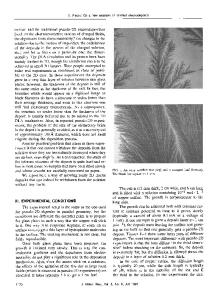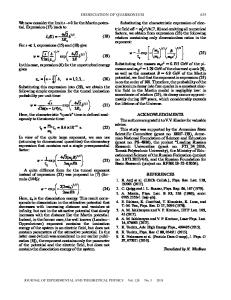Vacuum instability in a constant inhomogeneous electric field: a new example of exact nonperturbative calculations
- PDF / 1,260,077 Bytes
- 27 Pages / 595.276 x 790.866 pts Page_size
- 14 Downloads / 327 Views
Regular Article - Theoretical Physics
Vacuum instability in a constant inhomogeneous electric field: a new example of exact nonperturbative calculations T. C. Adorno1,2,a , S. P. Gavrilov2,3,b , D. M. Gitman2,4,5,c 1
Department of Physics, College of Physical Sciences and Technology, Hebei University, Wusidong Road 180, Baoding 071002, China Department of Physics, Tomsk State University, Lenin Prospekt 36, 634050 Tomsk, Russia 3 Department of General and Experimental Physics, Herzen State Pedagogical University of Russia, Moyka embankment 48, 191186 St. Petersburg, Russia 4 P. N. Lebedev Physical Institute, 53 Leninskiy prospekt, 119991 Moscow, Russia 5 Instituto de Física, Universidade de São Paulo, Caixa Postal 66318, São Paulo, S.P. CEP 05508-090, Brazil
2
Received: 5 December 2019 / Accepted: 10 January 2020 © The Author(s) 2020
Abstract Basic quantum processes (such as particle creation, reflection, and transmission on the corresponding Klein steps) caused by inverse-square electric fields are calculated. These results represent a new example of exact nonperturbative calculations in the framework of QED. The inverse-square electric field is time-independent, inhomogeneous in the x -direction, and is inversely proportional to x squared. We find exact solutions of the Dirac and Klein– Gordon equations with such a field and construct corresponding in- and out-states. With the help of these states and using the techniques developed in the framework of QED with x-electric potential steps, we calculate characteristics of the vacuum instability, such as differential and total mean numbers of particles created from the vacuum and vacuum-to-vacuum transition probabilities. We study the vacuum instability for two particular backgrounds: for fields widely stretches over the x-axis (small-gradient configuration) and for the fields sharply concentrates near the origin x = 0 (sharp-gradient configuration). We compare exact results with ones calculated numerically. Finally, we consider the electric field configuration, composed by inverse-square fields and by an x-independent electric field between them to study the role of growing and decaying processes in the vacuum instability. 1 Introduction Particle creation from the vacuum by strong electromagnetic and gravitational fields is a remarkable effect predicted by quantum field theory (QFT). In the late 20s and the early a e-mails:
[email protected]; [email protected]
b e-mails:
[email protected]; [email protected]
c e-mail:
30s, Klein [1,2] and Sauter [3] considered the effect in the framework of the relativistic quantum mechanics. However, from the very beginning, it became clear that all the questions could be answered only in the framework of QFT. QFT with external backgrounds is, to a certain extent, an appropriate model for such calculations. In the framework of such a model, the particle creation is related to a violation of the vacuum stability with the time. Backgrounds (external fields) that violate the vacuum stability are electric-like
Data Loading...











